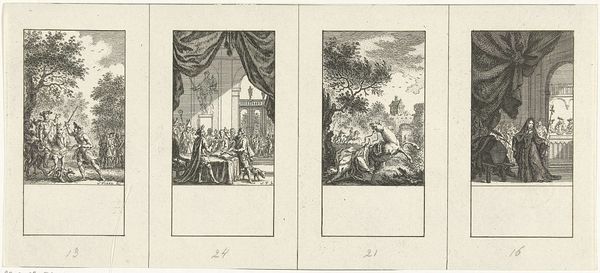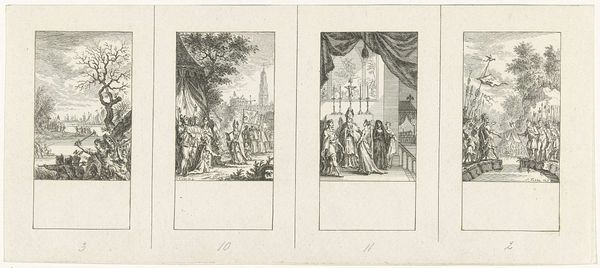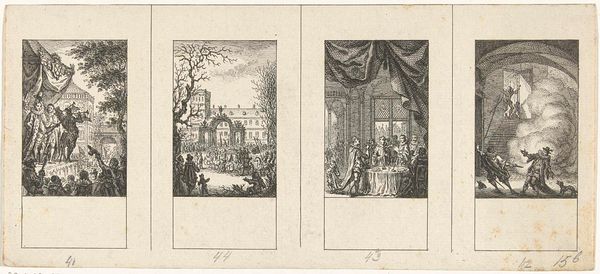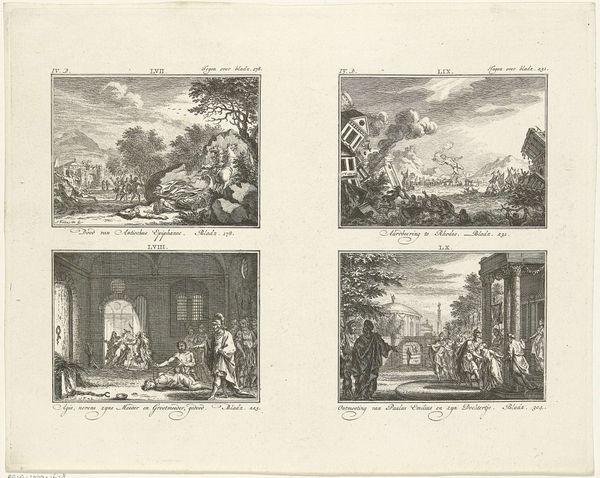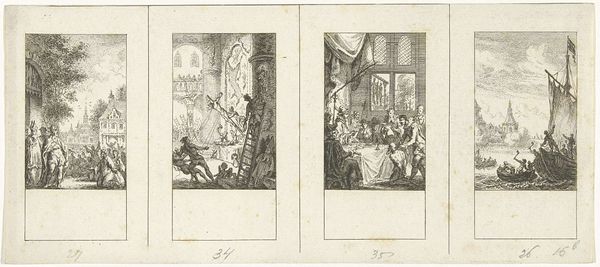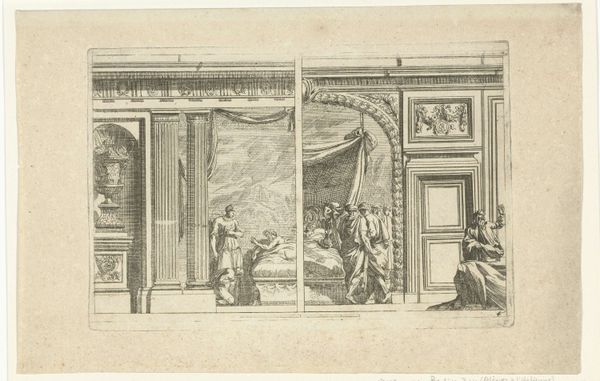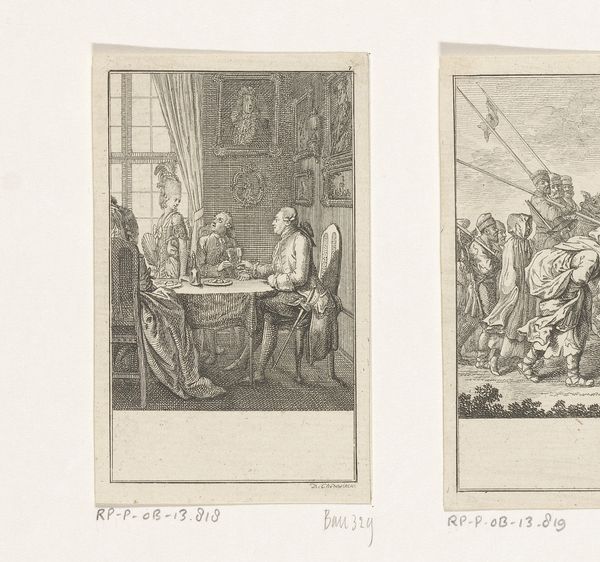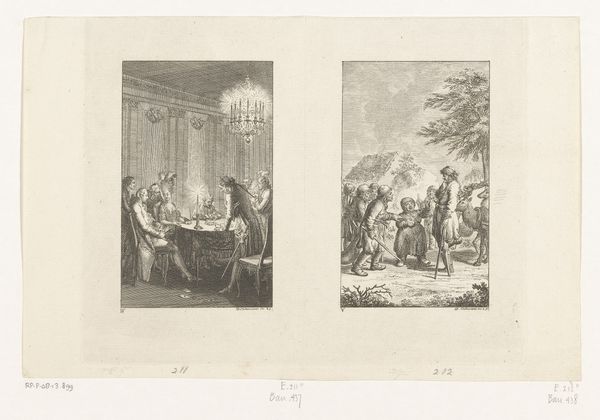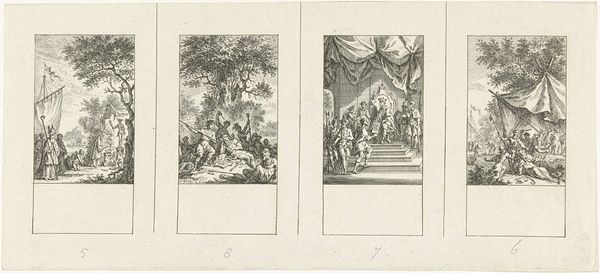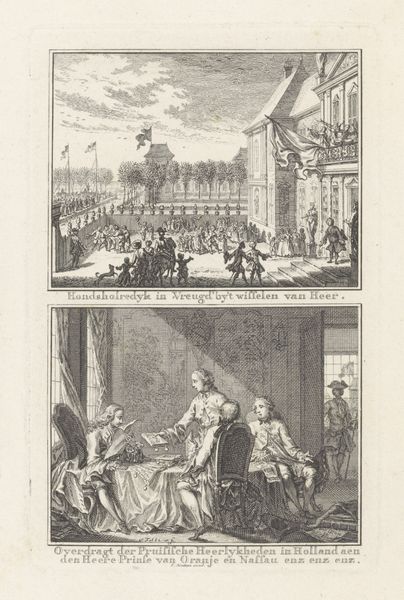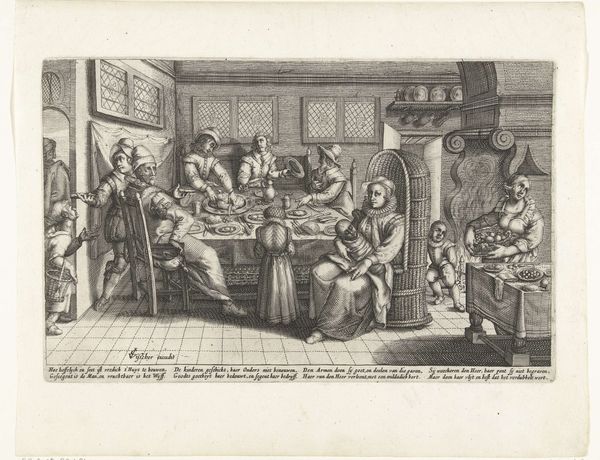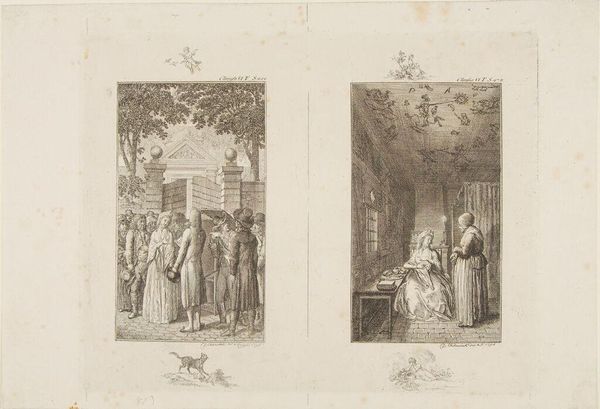
print, engraving
#
baroque
# print
#
old engraving style
#
history-painting
#
engraving
Dimensions: height 111 mm, width 250 mm
Copyright: Rijks Museum: Open Domain
Editor: Here we have "Four Episodes from National History" by Simon Fokke, spanning from 1722 to 1784. It's an engraving, and quite detailed. The scenes depict gatherings, almost like propaganda images. What’s your perspective on this print? Curator: What strikes me are the clear contrasts between inside and outside, public and private spheres. Note the labour involved in creating the etching. The lines themselves are commodities created through a process. How were these prints intended to be distributed and consumed? Who had access to them? Editor: So you’re focusing on how the prints themselves functioned as objects within society? Curator: Precisely. The act of producing engravings made these historical narratives reproducible and more widely accessible than, say, a single painted canvas. This is not simply about depicting history; it's about disseminating a particular interpretation of it through mass-produced objects. How do the depicted resources or class relations play a role? Editor: I didn't think about the economics involved. Does the baroque style influence how these historical moments are presented? Curator: Consider how the theatrical compositions—the dramatic lighting, the posed figures—enhance the narratives being presented. But baroque also demanded a different skillset from its makers. Did this process emphasize particular expertise or labor? Whose skills and whose labor counted, and were thus deemed worth paying for? Editor: I see how considering the printmaking process itself opens up new avenues for understanding this piece. Curator: Indeed. It moves us away from just aesthetic appreciation towards a broader understanding of production, distribution, and power. Looking at art in terms of materials gives such a fresh context to history. Editor: This has given me a new appreciation for prints, seeing them not just as images, but also artifacts deeply embedded in economic and social processes.
Comments
No comments
Be the first to comment and join the conversation on the ultimate creative platform.
